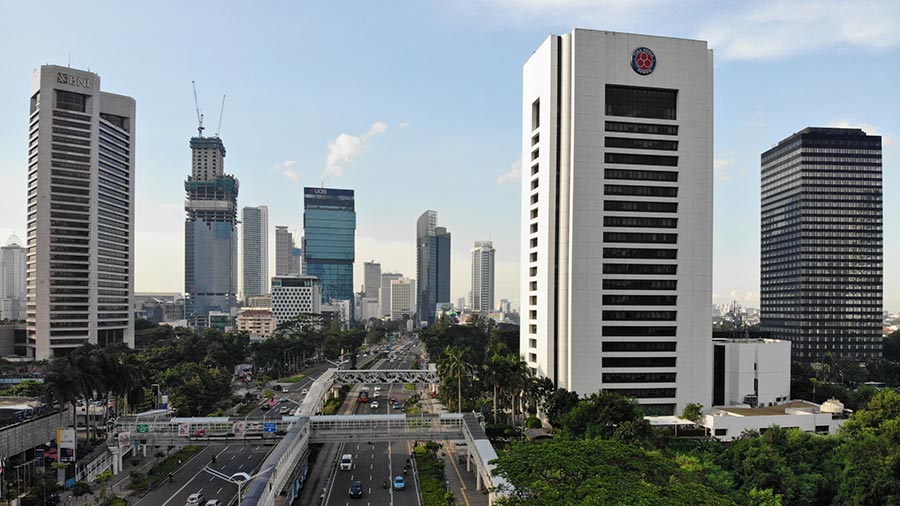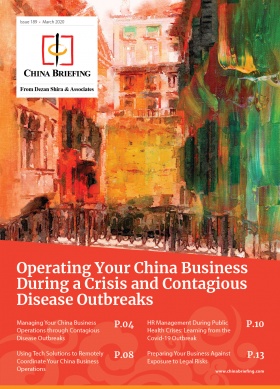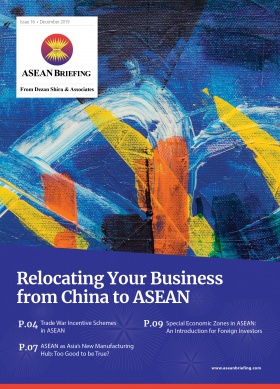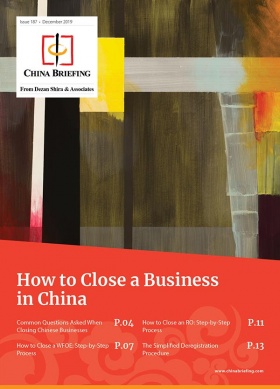China Plus One Series: Cambodia’s Appeal to Foreign Investors
In recent years, many foreign investors based in China have been assessing alternative locations in Asia to supplement their operational capacity.
In this series, we profile potential destinations for foreign investors looking to diversify their presence in the Asian market.
A “China plus one” strategy is one where investors complement their core China operations with additional ones in another country to lower costs, diversify risks, and access new markets.
Lying between Vietnam and Thailand in Southeast Asia, Cambodia is a less talked about destination when investors consider alternative destinations for their China plus one strategy. While Cambodia lacks Vietnam’s rapid growth and large labor pool and Thailand’s friendly business environment and skilled workforce, it is carving a niche for itself in the garment industry.
The garment industry, which includes products like clothing, footwear, and textiles, has been gradually relocating from China in the face of rapidly rising labor costs, and Cambodia has been one of the main beneficiaries of this trend. The garment industry alone is responsible for 16 percent of Cambodia’s GDP and 80 percent of its exports.
Cambodia’s relatively small size and challenging business environment limit its attractiveness for foreign investors, but those in the garment industry will find a developing ecosystem to tap into.
Labor market
Cambodia’s labor market is in the midst of a long-term trend away from agriculture and towards services and manufacturing. Currently, about 40 percent of the population works in agriculture, while the garment industry and construction are the two largest non-agricultural employers. In 2018, the garment industry employed 86 percent of all Cambodian factory workers.
The shift to a service and manufacturing driven economy, however, is limited by the labor force’s skills deficit. According to the World Economic Forum’s Global Competitiveness Report, Cambodia ranks 120 out of 141 economies in terms of workforce skills.
Further, compared to its neighbors, Cambodia has a relatively small population of 16.3 million. As such, Cambodia’s labor market lacks the depth of other ASEAN countries like Vietnam and Indonesia.
Cambodia only has a statutory minimum wage for workers in the garment industry. The minimum wage for these workers is US$190 per month in 2020, up 4.4 percent from US$182 in 2019. Workers on probation have a slightly lower minimum wage of US$185 per month.
In addition to base wages, garment workers are entitled to allowances, including US$7 for transportation and rent US$10 for regular attendance. The allowances for 2020 are unchanged from the previous year.
Despite increasing minimum wages for 2020, the government also cut the number of public holidays from 28 days to 22 in an effort to increase productivity.
Taxation
Cambodia has a standard corporate income tax rate of 20 percent, which is competitive in the ASEAN region. It is lower than the Philippines (30 percent) and Indonesia (25 percent), and equal to Vietnam and Thailand.
The government is considering lowering the CIT rate for garment firms to 15 percent to boost the industry, though this has not been formally decided.
In terms of withholding taxes, dividends, interest, and royalties are all subject to a 14 percent tax rate.
Cambodia also levies a 10 percent value-added tax (VAT) for goods and services. Personal taxes are levied on a progressive scale that goes up to 20 percent on worldwide income. Non-residents, meanwhile, are taxed at a flat 20 percent rate on Cambodia-sourced income.
Cambodia has signed double tax agreements with seven countries – Singapore (in effect January 1, 2018), Thailand (in effect January 1, 2018), Brunei (in effect January 1, 2019), People’s Republic of China (in effect January 1, 2019), Vietnam (in effect January 1, 2019), Indonesia (signed in 2018 but not yet in effect), and Hong Kong (in effect January 1, 2020).
For DTA’s that are in effect for Cambodian tax residents, the relief of double taxation is provided through a tax credit for the tax that has been paid in the other jurisdiction on presentation of supporting documentation showing payment.
Trade agreements
Cambodia currently benefits from inclusion in the EU’s “Everything But Arms” (EBA) trade policy, which excludes exports from the world’s least-developed countries from EU duties. This policy makes Cambodian products especially competitive in the EU, which is responsible for over a third of Cambodia’s exports.
However, Cambodia’s preferential trade benefits were partially suspended following a decision by the European Commission on February 12, 2020.
The commission decided to partially suspend Cambodia’s benefits in response to what it deemed to be the government’s systematic violation of human rights. According to the ruling, selected garment and footwear products and all travel goods and sugar will be subject to import tariffs following a six-month interim period.
The ruling is the culmination of an investigation that began in February 2019 after the EU raised concerns about the Cambodian government’s rights abuses and crackdown on the political opposition. If the Cambodian government improves the situation within the six-month interim period, its preferential status may be reinstated.
Complete exclusion from the EBA would mark a significant hurdle for Cambodia given the relative lack of diversity in the country’s economy and the importance of the EU market. An official from the Finance Ministry recently suggested that it would lead to a US$500 million reduction in garment exports and 35,000 job losses.
Besides the EBA, Cambodia, as a member of ASEAN, is party to all of the bloc’s trade agreements. Unlike many other ASEAN countries, though, Cambodia does not have additional bilateral trade agreements.
Nevertheless, while Cambodia does not have any free trade agreements (FTA) outside of its ASEAN commitments, the government has entered into negotiations with several countries and economic groups in recent years. Currently, Cambodia is negotiating an FTA with China, South Korea, and the Eurasian Economic Union, and is part of the RCEP negotiations.
Special economic zones
Cambodia has 54 special economic zones (SEZs) throughout the country, though not all of these are currently active. According to the Council for the Development of Cambodia, there are currently 23 SEZs, which are collectively home to 490 factories and employ 130,000 people. As such, while Cambodia has many SEZs on paper, in practice their development is relatively limited.
SEZs offer foreign investors various incentives, such as CIT exemptions of up to 100 percent and exemptions for import and export duties depending on the size of the investment.
Additionally, the government plans to approve a new SEZ Law this year to increase their attractiveness to foreign investors. The law, while not finalized, will offer additional incentives, increase transparency, and promote fair competition, according to Prime Minister Hun Sen.
The Cambodian government hopes for SEZs to contribute to investment in higher-value industries like electronics, but such plans have not yet borne fruit.
Business environment
Cambodia suffers from a poor business environment. According to the World Bank’s Ease of Doing Business rankings, Cambodia ranks 144 out of 190 economies. That puts Cambodia ahead of only the two most challenging markets in ASEAN – Laos and Myanmar – and significantly behind the rest, including its neighbor Vietnam, which ranks 70th.
Starting a business in Cambodia is especially cumbersome. The country ranks 187th for starting a business due to complicated, costly, and time-consuming procedures. Whereas in some countries one can start a business in a single day, in Cambodia it takes on average 99 days to start one.
Cambodia also struggles in a number of other categories, including acquiring construction permits, enforcing contracts, and paying taxes. One area of strength, however, is access to credit, where it ranks 25th in the world.
An industry-specific destination
Cambodia’s relatively small workforce and market potential combined with a difficult business environment means that it is not the ideal location for all China plus one investors. However, for those in the garment industry, Cambodia represents a low-cost destination to complement China operations.
That being said, Cambodia is not the only alternative in the garment industry. Vietnam and Bangladesh, for example, both have sizeable garment industries, are growing rapidly, and have much larger labor markets. Even Myanmar, which is still a frontier economy, could eventually pose a challenge to Cambodia.
Due to the importance of the industry to the economy, however, the Cambodian government places a high priority on meeting its needs. As such, Cambodia offers government support, low costs, and an ideal geographic location for China-based investors in the garment industry looking to diversify.
Related Reading
 China Plus One Series: Indonesia’s Appeal to Foreign Investors in Asia
China Plus One Series: Indonesia’s Appeal to Foreign Investors in Asia
 China’s Support Policies for Businesses Under COVID-19: A Comprehensive List
China’s Support Policies for Businesses Under COVID-19: A Comprehensive List
 China’s Social Credit System: COVID-19 Triggers Some Exemptions, Obligations for Businesses
China’s Social Credit System: COVID-19 Triggers Some Exemptions, Obligations for Businesses
About Us
China Briefing is written and produced by Dezan Shira & Associates. The practice assists foreign investors into China and has done since 1992 through offices in Beijing, Tianjin, Dalian, Qingdao, Shanghai, Hangzhou, Ningbo, Suzhou, Guangzhou, Dongguan, Zhongshan, Shenzhen, and Hong Kong. Please contact the firm for assistance in China at china@dezshira.com.
We also maintain offices assisting foreign investors in Vietnam, Indonesia, Singapore, The Philippines, Malaysia, and Thailand in addition to our practices in India and Russia and our trade research facilities along the Belt & Road Initiative.
- Previous Article Yunnan Investment Profile: Industry, Economics, and Support Policies for Businesses
- Next Article COVID-19’s Grim Milestones: Impact on Business is Real but Opens Up New Growth Areas








